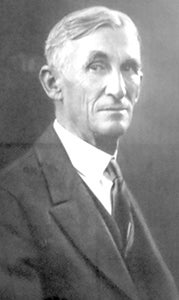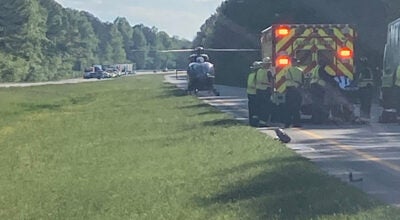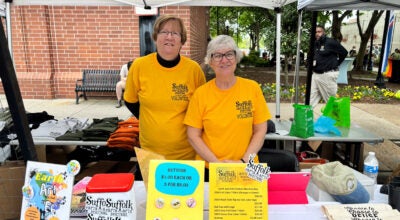The murder of Grac Jones: Chapter 15
Published 9:19 pm Tuesday, August 11, 2015
Appeals and petitions
EDITOR’S NOTE: On the evening of Oct. 26, 1908, five shots rang out in the village of Holland. Tiberius Gracchus “Grac” Jones lay dying on the ground inside the gate leading to his home. “They have killed me and killed me for telling the truth,” he told a friend as his life ebbed away. This is the 15th in a series of articles about the Jones murder case. Suffolk historian Kermit Hobbs Jr. compiled the 18-part series from personal accounts, newspaper stories and court records he has studied from the period.
By Kermit Hobbs Jr.
Special to the News-Herald
At the time of Sam Hardy’s conviction, the electric chair was a new form of execution in Virginia.
A number of states had been using the method for several years, but it had just been adopted in Virginia in 1908. Indeed, its first use in Virginia occurred Oct. 13, 1908, less than two weeks before the murder of Gracchus Jones. Unless Sam Hardy’s legal team could find a way to free Hardy, he would meet the same fate.
The date set for his execution was Friday, June 25, 1909.
The team of R.H. Rawls, T.H. Wilcox, Seth Everett and J. Edward Cole wasted no time in laying out the grounds for its motion to set aside the guilty verdict and give Hardy a new trial.
For one thing, they contended, the verdict was contrary to the evidence. In essence, they felt that the jury had gotten it wrong. Furthermore, they contended that some of the evidence the judge had allowed against the defendant had been out of order. Conversely, they argued that some evidence supporting the defendant’s innocence had been unfairly disallowed.
The team stated that in the evenings during the trial, jury members had read newspaper accounts of the trial proceedings. Even worse, some had attended moving picture shows. One portrayed the murder of a man ambushed as he walked alone at night, very similar to the Grac Jones murder. The other dealt with similar crime and violence.
These facts, they contended, had unfairly affected the minds of the jurors.
Another point of their argument lay in the nature of Col. Cabell’s closing argument that, in their opinion, alluded to facts that were not in evidence. They charged that he had unfairly directed much of his closing argument toward crime in general and applied it specifically toward Sam Hardy.
Finally, the defense team stated that further evidence had been discovered since the trial that would, presumably, be favorable to the defendant.
Judge McLemore reviewed the points raised in the motion for a new trial, and after careful consideration, he rejected the motion.
He wrote, “I find some solace in reaching these conclusions because of the fact that the objections raised and so earnestly urged by the able counsel for the defense are all of a legal nature and more or less technical, and if therefore I have reached an erroneous conclusion in any of them, the prisoner will not be seriously prejudiced in having my ruling reviewed by the court of last resort.”
He was confident that a higher court would not overrule his decision.
The defense team then prepared a 500-page petition to the Supreme Court of Appeals of Virginia for a new trial, further expounding upon the same points as in the earlier motion. Unfortunately for Hardy and his supporters, Judge McLemore had been right. This court found that the original conviction was in order and would not be set aside.
During the appeal process, Hardy’s execution was put on hold. After the appeals process failed, the fatal event was rescheduled for May 20, 1910.
As the defense team worked on the legal efforts to save Sam Hardy from the electric chair, other people pursued other avenues. Edward Cole, Hardy’s brother-in-law, led a campaign to circulate petitions all over the state of Virginia, to present to Gov. William Mann for clemency on behalf of Hardy.
The petition effort yielded impressive results. About 2,500 people around the state signed their names on behalf of Sam Hardy. Among the signatures were three members of the jury that convicted him.
Hardy begged Bunyan Jones, brother of the murder victim, to sign the petition on his behalf. Jones refused, but a rumor was spread that he had signed it. Jones believed this false rumor had convinced many others to sign the petition on Hardy’s behalf.







